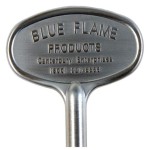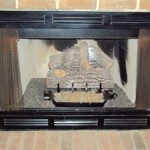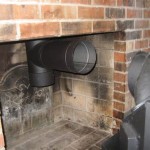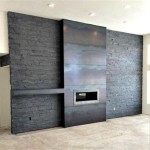Gas Fireplace Installation: A Comprehensive Guide
Installing a gas fireplace is a significant home improvement project that can enhance both your home's aesthetics and comfort. However, it's imperative to approach this undertaking with careful planning and execution to ensure safety and optimal performance. This comprehensive guide provides a detailed overview of the gas fireplace installation process, outlining essential considerations, key steps, and important safety practices.
1. Planning and Preparation
Before embarking on the installation, thorough planning is crucial. Determining the ideal location, assessing the necessary space and ventilation requirements, and selecting the appropriate gas fireplace type are critical steps.
Location Selection: Consider factors such as proximity to existing gas lines, structural integrity of the area, and desired aesthetic appeal. Ensure ample space for the fireplace and proper ventilation.
Space and Ventilation Requirements: Gas fireplaces require adequate ventilation to ensure safe and efficient operation. Consult local building codes and manufacturer guidelines regarding minimum required clearances and ventilation systems.
Gas Fireplace Type: Choose a gas fireplace that aligns with your desired aesthetic, heating capacity, and budget. Gas fireplaces come in various styles, including direct-vent, vent-free, and traditional masonry fireplaces. Each type has unique advantages and limitations, so careful research and consultation with a qualified professional are essential.
2. Installation Process
The installation process involves several key steps, each requiring specialized knowledge and expertise. It is highly recommended to engage a licensed and experienced gas fireplace installer for this project.
Gas Line Connection: A licensed plumber or gas fitter will connect the gas fireplace to the existing gas line. This requires specialized tools and knowledge to ensure proper gas flow and prevent leaks.
Fireplace Unit Installation: The selected fireplace unit is installed according to manufacturer instructions and local building codes. This step involves assembling the unit, securing it to the existing structure, and ensuring proper alignment and clearances.
Venting System Installation: For direct-vent and traditional masonry fireplaces, a venting system is essential to safely channel combustion byproducts outside the home. This involves installing vent pipes, chimneys, and other components according to code and manufacturer specifications.
Electrical Connection: Gas fireplaces often require an electrical connection for features such as ignition systems, remote controls, and blower fans. A licensed electrician will ensure safe and proper electrical wiring.
Final Inspection and Testing: Once the installation is complete, a qualified inspector will thoroughly review the work and conduct a final inspection to ensure compliance with all codes and regulations. The inspector will also test the fireplace's operation to confirm proper functionality and safety.
3. Safety Considerations
Gas fireplace installation requires strict adherence to safety protocols to prevent accidents and ensure long-term reliability.
Gas Line Safety: Ensure proper sealing of all connections and fittings to prevent gas leaks. Regularly inspect gas lines for signs of leaks and corrosion.
Ventilation Safety: Maintain proper ventilation throughout the installation process. Ensure that exhaust vents are clear of obstructions and that the fireplace is installed in accordance with ventilation requirements.
Electrical Safety: Use only licensed electricians for electrical connections. Ensure that wiring is properly routed, insulated, and grounded according to code and manufacturer specifications.
Combustion Byproduct Safety: Proper venting is essential to safely remove combustion byproducts, including carbon monoxide. Regularly inspect vents and chimneys for blockages and corrosion.
Fireplace Use Safety: Always follow manufacturer instructions and safety guidelines when operating the fireplace. Never leave a burning fireplace unattended, and keep flammable materials away from the unit.
Installing a gas fireplace is a complex project that requires professional knowledge and expertise. It is crucial to prioritize safety by engaging licensed and experienced professionals and adhering to all code requirements. By carefully planning, executing the installation process correctly, and prioritizing safety, you can enjoy the beauty and comfort of a gas fireplace for years to come.

How To Install A Gas Fireplace Diy Built In

Convert To Gas Installing Fireplace Inserts Doctor Flue
How To Install Gas Fireplace Insert Heat Glo

Central Fireplace Home Heating Gas Stoves Fireplaces Installation

If You Have A Gas Fireplace It May Or Not Chimney Flue

Fireplace Installations Near Dc Chimney Experts

How To Install A Gas Fireplace Diy Built In

How To Select And Install A Gas Fireplace Log Set Fireplaces Direct Learning Center

Efficient Prefab Gas Fireplaces Fireplace Showroom In Tilton Nh

Ventless Gas Fireplace Insert Installation Framing Wall For
Related Posts








